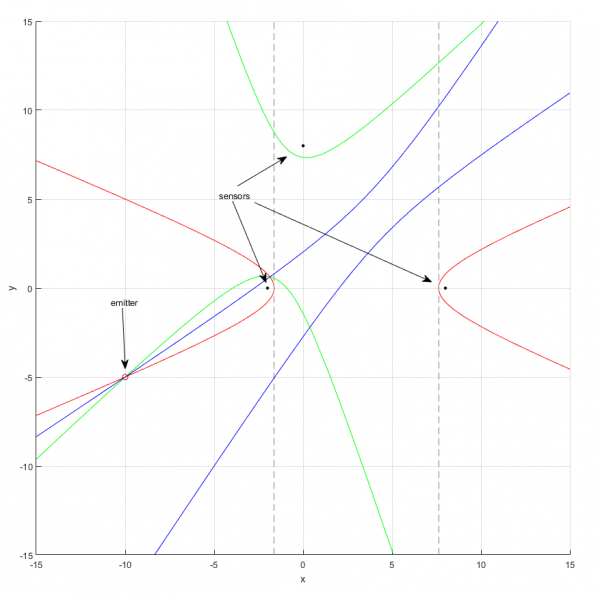Projects:2017s1-127 Sound Trilateration for Positioning of the Sound Source
Contents
Supervisors
- Dr Brian Ng
- Dr Withawat Withayachumnankul
Students
- Scott Morphett
- Jessica Pisaniello
Introduction
The original project title still remains for the page but we have been working by the title of:
Sound Multilateration for Positioning of the Sound Source
as Multilateration is the more correct term.
Objectives
The primary objective of the project is to devise a system to successfully locate and generate relative coordinates in a 2D plane of a stationary acoustic sound source in an *ideal space with known microphone sensor positions.
Subsequent goals are to:
- Track a moving source.
- Develop the system further by increasing the system capability, and to successfully apply it to a less controlled environment where we need to account for background noise and spaces with different levels of reverberation.
(*) Note: Ideal is defined as anechoic, with minimal level noise, and limited to a predefined coverage area. The speed of sound will be approximated for the measured ambient temperature as applied to dry air.
Motivation
Some applications that have been suggested would be for:
- automatic control of camera angle for conferences with many speakers in seated positions.
- For pinpointing gun fire or loud transient sounds in wider areas.
- To focus lighting in large rooms or on stages.
Background
Multilateration
Multilateration is a navigation technique that uses the Time Difference of Arrival method or TDOA to find a transmitter (ie. sound) from an array of receivers (ie. microphones). Its a geometric algorithm which finds the estimated position from intersecting hyperbola equations that are centred at discrete pairs of receivers. This gives a range of solutions that then need to be reduced by another method.
The image to the right shows how the hyberbolic curves interact in relation to the emitter and receivers. Each different colour curve is related to one discrete pair of receivers.
Each curve is characterised by this equation, where t is the time for the sound to reach each microphone and r is the converted distance. The constant 'r' is the same if you take the distance from any point to each sensor pair and then find the difference that will be r.
Time Difference Of Arrival
This information is arguably the most important part of the whole equation as the method to find the coordinates relies heavily on this to be accurate. There are a variety of ways to estimate the TDOA and some are more reliable than others. For example:
- Cross Correlation
- Generalised Cross Correlation (GCC)
- The Least Squares Estimator Method
- Adaptive Eigenvalue Decomposition
Positioning
Design
Results
Conclusion
References
[1]
[2]
[3]
[4]

